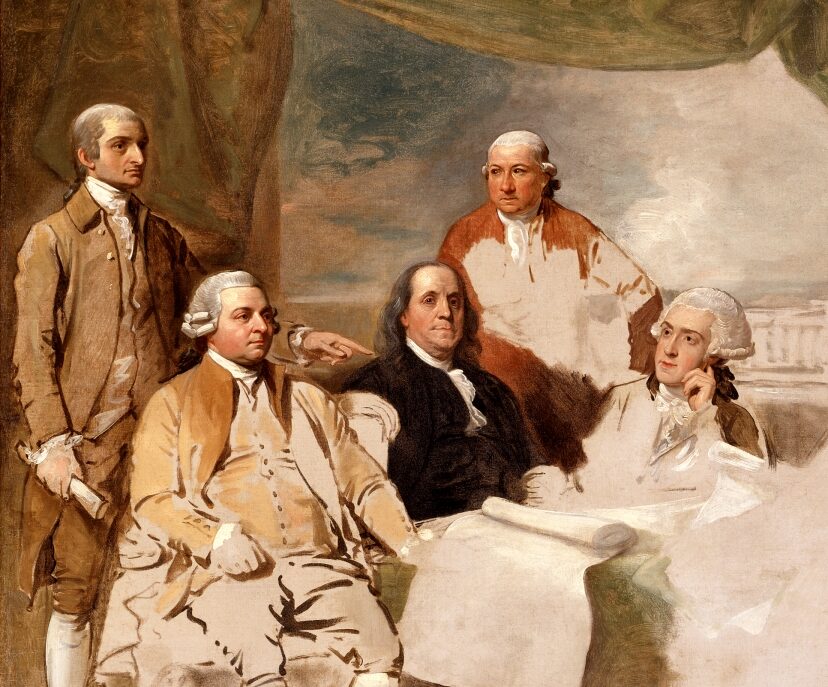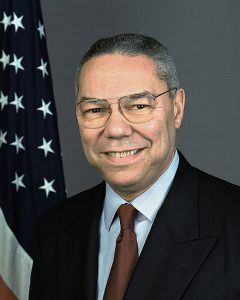CHAPTER 19: “A Unique and Extraordinary Moment”: Gorbachev, Reagan, Bush, and the End of the Cold War, 1981-1991
Reagan, SDI and the “Star Wars” Myth(s)
“Reagan complicated matters still further with a bombshell speech in March 1983 proposing a Strategic Defense Initiative (SDI), a missile defense system employing lasers from space-based platforms that could intercept and destroy enemy missiles before they struck U.S. or allied soil…. SDI proved a typically Reaganesque stroke of political genius.” –George Herring, p. 869
Speech by President Reagan, March 23, 1983
“After careful consultation with my advisers, including the Joint Chiefs of Staff, I believe there is a way. Let me share with you a vision of the future which offers hope. It is that we embark on a program to counter the awesome Soviet missile threat with measures that are defensive. Let us turn to the very strengths in technology that spawned our great industrial base and that have given us the quality of life we enjoy today.
What if free people could live secure in the knowledge that their security did not rest upon the threat of instant U.S. retaliation to deter a Soviet attack, that we could intercept and destroy strategic ballistic missiles before they reached our own soil or that of our allies?
I know this is a formidable, technical task, one that may not be accomplished before the end of this century. Yet, current technology has attained a level of sophistication where it’s reasonable for us to begin this effort. It will take years, probably decades of effort on many fronts. There will be failures and setbacks, just as there will be successes and breakthroughs. And as we proceed, we must remain constant in preserving the nuclear deterrent and maintaining a solid capability for flexible response. But isn’t it worth every investment necessary to free the world from the threat of nuclear war? We know it is.”
Discussion Questions
- How was SDI or Star Wars characteristic of what Herring calls President Reagan’s “political genius”?
- Over the course of his two terms, how did Reagan’s approach to the Soviet threat evolve? What were the key turning points?
First Gulf War (1990-91)
President George H.W. Bush on End of Gulf War
“Bush used his famous Rolodex and his personal ties with world leaders to assemble a broad coalition, including Syria, Egypt, and Saudi Arabia, to remove Iraq from Kuwait. Gorbachev was the key, and his assent left Saddam isolated. Throughout the fall of 1990, the United States mobilized in Saudi Arabia and the Persian Gulf an awesome array of air, sea, and land power, the fruits of Carter’s and Reagan’s military buildup. ” –George Herring, p. 909
Miller Center: March 6, 1991: Address Before a Joint Session of Congress on the End of the Gulf War
“This is a victory for every country in the coalition, for the United Nations. A victory for unprecedented international cooperation and diplomacy, so well led by our Secretary of State, James Baker. It is a victory for the rule of law and for what is right. Desert Storm’s success belongs to the team that so ably leads our Armed Forces: our Secretary of Defense and our Chairman of the Joint Chiefs, Dick Cheney and Colin Powell. And while you’re standing—[laughter]—this military victory also belongs to the one the British call the “Man of the Match”—the tower of calm at the eye of Desert Storm—General Norman Schwarzkopf….We went halfway around the world to do what is moral and just and right. We fought hard and, with others, we won the war. We lifted the yoke of aggression and tyranny from a small country that many Americans had never even heard of, and we ask nothing in return. We’re coming home now—proud, confident, heads high. There is much that we must do, at home and abroad. And we will do it. We are Americans.”
Discussion Questions
- What lessons should policymakers draw from the coalition-building experience engineered by the Bush Administration during the First Gulf War?
- How did the First Gulf War both reshape and fail to reshape the dynamic in the Middle East?

